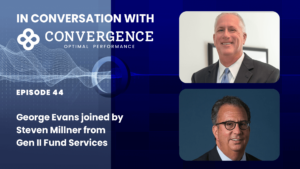
New research has revealed annual spend on middle- and back-office costs to the alternative asset management industry of $15 billion annually.
This spend is growing at 20% annually which equates to 65 bps on assets under management.
These costs have prompted managers to outsource their middle and back office and, more recently, work with technology companies, which provide the infrastructure for asset managers’ middle and back office. Specifically, this infrastructure includes services that use proprietary benchmarking data for these functions.
The vendor Convergence’s proprietary benchmark data is combined with analytical tools and models that help to identify opportunities to reduce Management Company and Fund expenses. Convergence also has an advisory and solutions practice to develop, implement and manage flexible service models including onsite and offsite co-sourcing teams working with service providers.
The company has launched a new website to offer the following benchmarking services: identifying headcount and productivity differences between managers within the same peer group. Peer groups are customized by Convergence and the client. This data is provided for asset managers, investors and service providers
Gene Donnelly and John Phinney co-founders stated: “As practicing industry CFO’s, we were frustrated by the lack of independent, fact based benchmarking data for middle and back office functions. Convergence now provides this data along with advisory and staffing solutions to help asset managers achieve optimal performance across their infrastructure platforms.’
Donnelly previously held senior positions at Apollo Capital and PWC, while John Phinney held senior positions at Apollo Capital, The Rohatyn Group, JPMorgan and Fidelity. They work alongside partner George Evans, who was formerly with GlobeOp and BISYS.
Convergence’s new website also offers advisory services to identify the reasons behind these benchmarking differences and presents opportunities to improve efficiency, enhance controls, and reduce infrastructure expense.
![Single Post [Template] Single Post [Template]](https://www.convergenceinc.com/wp-content/uploads/2019/09/sean-pollock-PhYq704ffdA-unsplash-1.png)

